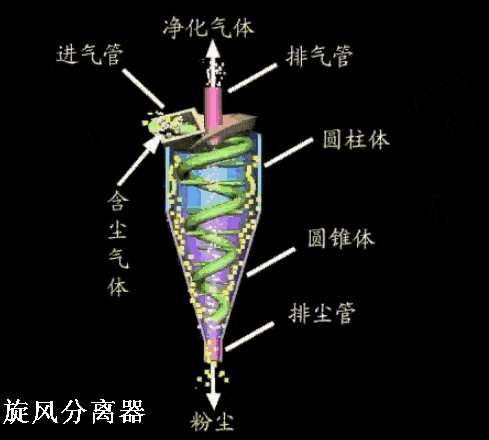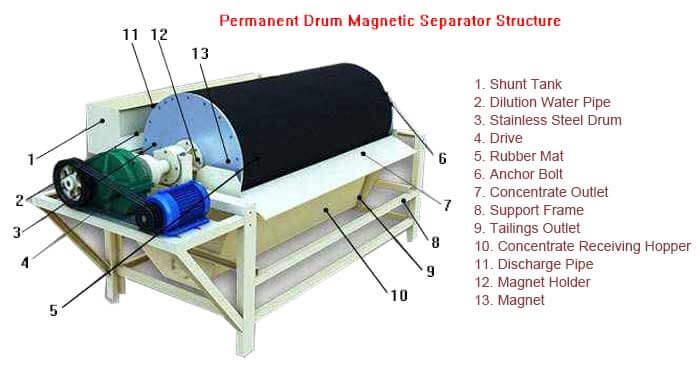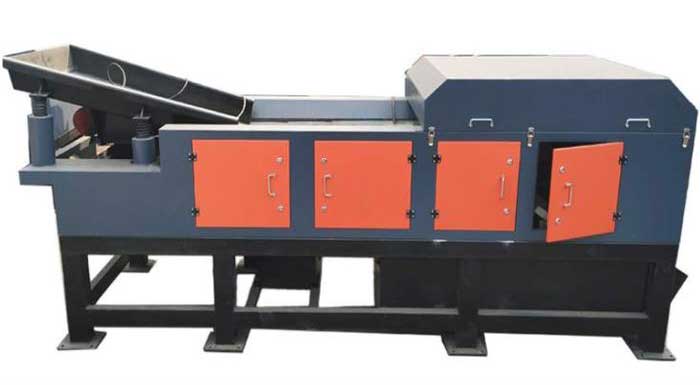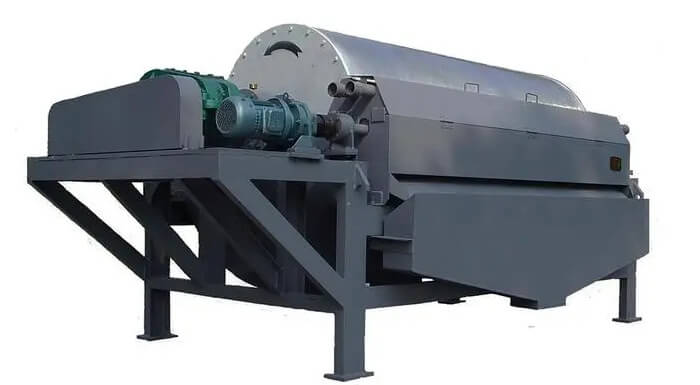Cyclone Separator Introduction | How To Choose
A cyclone separator is a device used for separating gas-solid or liquid-solid systems. It utilizes the different centrifugal forces generated by different substances during high-speed rotation to separate solid particles or droplets from gas or liquid flows. The cyclone separator has a simple structure, high operational flexibility, high efficiency, convenient management and maintenance, and low price. It is used for capturing 5-10μm dust.
Cyclone separators are widely used in the pharmaceutical industry, especially suitable for coarse dust particles, high dust concentration, high temperature and high pressure conditions. They are also often used as internal separation devices in fluidized bed reactors or as pre separators.

1. Cyclone Separator Composition and Structure
The main body of a cyclone separator is a cylinder and a cone, which is divided into a liquid collection area, a separation area, and a purification room.
The gas inlet can be set at the upper, middle, or lower part. When there is a lot of water in the gas that needs to be purified, we use lower intake air; On the contrary, when the gas moisture is low, the upper or middle intake is used.
The advantage of the upper intake is uniform gas distribution, but it requires a larger diameter and height of the equipment, which will increase the cost. The middle intake does not require a very high height, which is relatively low in cost.
2. Cyclone Separator Working Principle

When the dusty airflow enters the cyclone separator from the intake pipe at a speed of 12-25mm/s, the airflow inside the column runs in a spiral shape under the guidance of guide blades. Dense particles, whether liquid droplets or dust particles, are thrown to the periphery and lose inertia when they touch the cylinder wall. Then, under the action of gravity, they fall along the cylinder wall, enter the lower dust discharge port or liquid storage area, and are collected.
In the airflow passing through the cyclone separator, most of the particulate matter has been separated and collected, and the cleaner gas is discharged from the gas outlet at the top of the cyclone separator.
3. Cyclone Separator Applications
The cyclone separator has a simple structure and uses the principle of centrifugal sedimentation to separate particles from the airflow. It can separate solid particles and liquid mist below 5 microns and is a commonly used equipment in mining, cement, chemical and other industries.
- Industrial Production: In many industrial production processes, cyclone separators are used to remove particles from gases or liquids. For example, in the mining and metallurgical industries, cyclone separators are used for solid-liquid separation in mineral processing and refining processes.
- Environmental Protection: Cyclones are also used in the field of environmental protection. For example, it is used to remove pollutants and dust from the emitted gases.
- Medical and Pharmaceutical: In the medical and pharmaceutical fields, cyclone separators are used to separate solid drugs and liquid formulations.
- Food Processing: In the food processing industry, cyclone separators are used to remove solid particles from liquids or gases, such as the separation of flour and coke.

4. Characteristics of Cyclone Separators
- Long service life of cyclone separator.
- The cyclone separator has good separation effect.
- Various types of cyclone separators.
- The management and maintenance of cyclone separators are relatively simple, requiring only regular inspection and cleaning of the ash discharge port.
- The manufacturing cost and price of cyclone separators are relatively low
- The cyclone separator is required to be used for no less than 20 years after leaving the factory, with a high return rate.
- Under the specified pressure and gas throughput conditions, it can remove solid particles above 10 microns, and the working efficiency at the operating point can reach 99%.
- The cyclone separator has a simple structure, including various types such as spiral, vortex, bypass, diffusion, swirl, and multi tube, and can adapt to various application scenarios.

How To Choose A Suitable Cyclone Separator
The selection of cyclone separators mainly follows the following aspects:
(1). The diameter of the cyclone separator should be as small as possible. If the required air volume is large, several small-diameter cyclone dust collectors can be connected in parallel.
(2). The inlet wind speed of the cyclone separator should be maintained at 18-23m/s. When it is lower than 18m/s, its dust removal efficiency decreases; When the air velocity is higher than 23m/s, the dust removal efficiency does not increase significantly, but the resistance loss increases and the power consumption increases significantly.
(3). When selecting a separator, it is necessary to consider the resistance loss and structural form according to the working conditions, so as to reduce the power consumption as much as possible and facilitate maintenance.
(4). The minimum dust particle size that can be trapped by the cyclone separator should be equal to or slightly smaller than the dust particle size of the treated gas.
(5). When the temperature of the dust-laden gas is very high, attention should be paid to thermal insulation to avoid condensation of moisture inside the dust collector.
(6). The structure of the cyclone separator should be well sealed to ensure no air leakage, especially during negative pressure operation, and attention should be paid to the reliability of the unloading air-suction device.
(7). Explosion-proof devices should be installed for flammable and explosive dusts (such as pulverized coal). The usual practice for explosion-proof devices is to add a safety explosion-proof valve on the main road.
(8). When the dust viscosity is small, the maximum allowable dust mass concentration is related to the diameter of the cyclone separator cylinder, that is, the larger the diameter, the higher the allowable dust mass concentration.
 What is Permanent Magnetic Drum Separator | How Does It Work
What is Permanent Magnetic Drum Separator | How Does It Work Eddy Current Separator & Types | Versus Electrostatic Separation
Eddy Current Separator & Types | Versus Electrostatic Separation 15+ Types Dust Collector Structures and Working Principles
15+ Types Dust Collector Structures and Working Principles How To Classify Magnetic Separators
How To Classify Magnetic Separators



